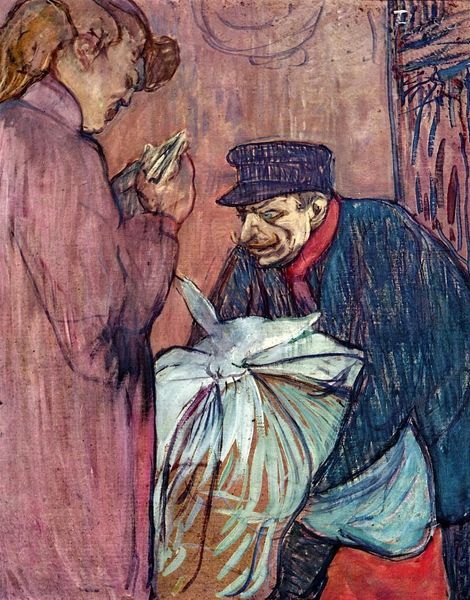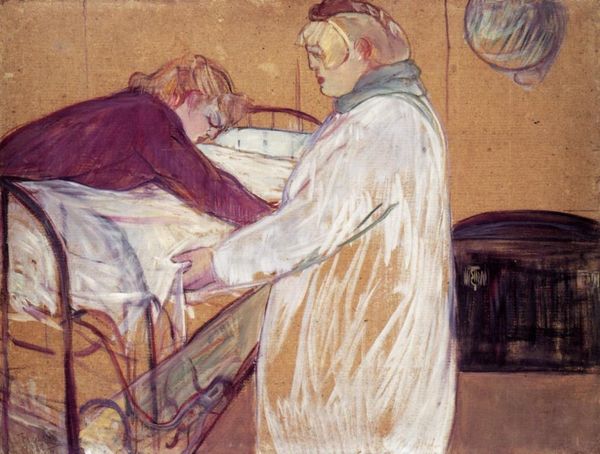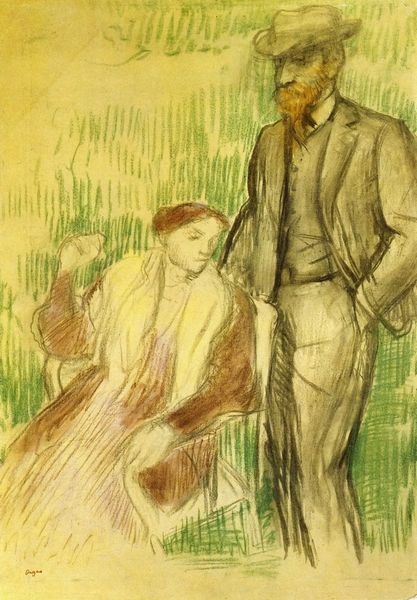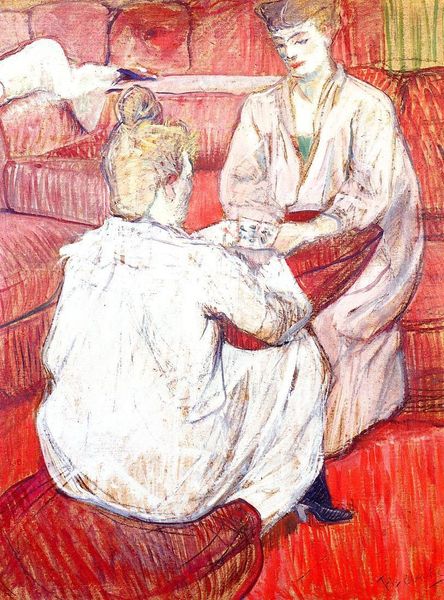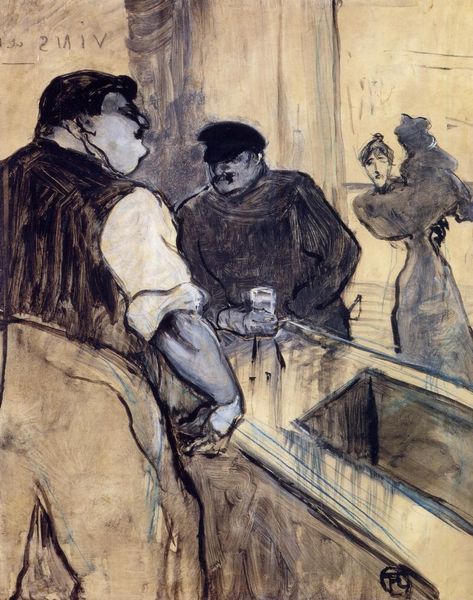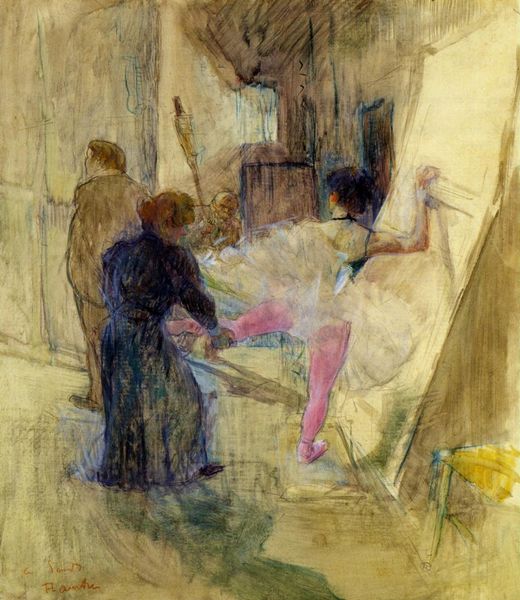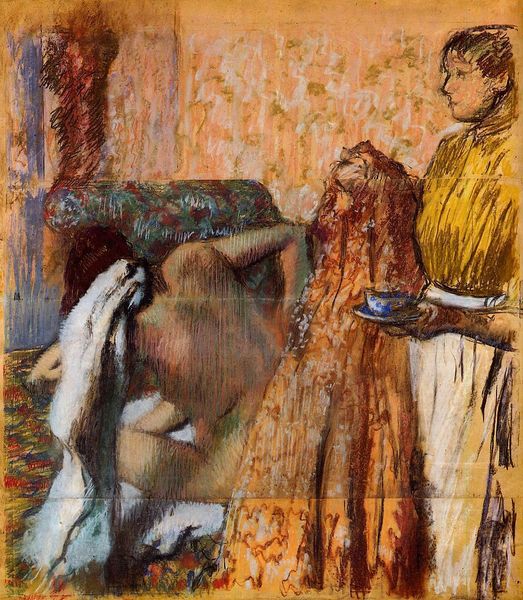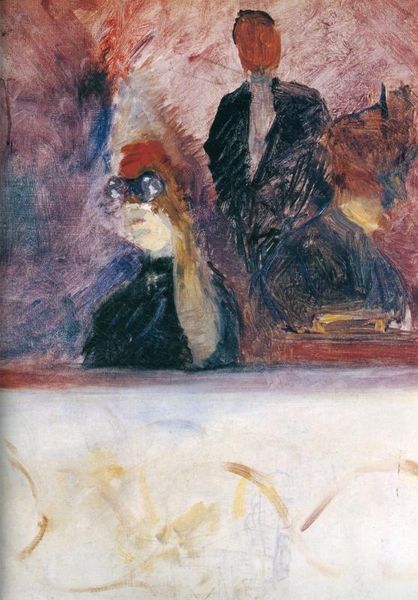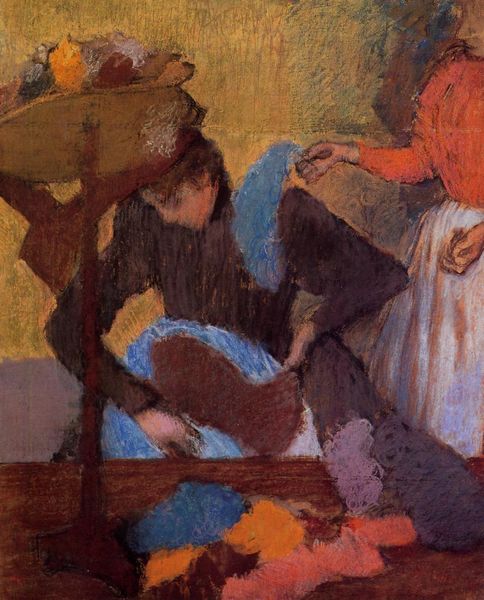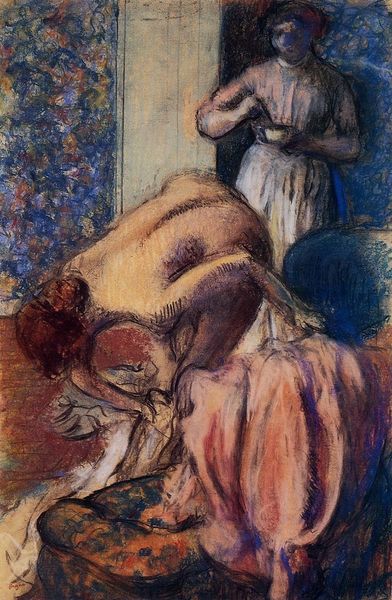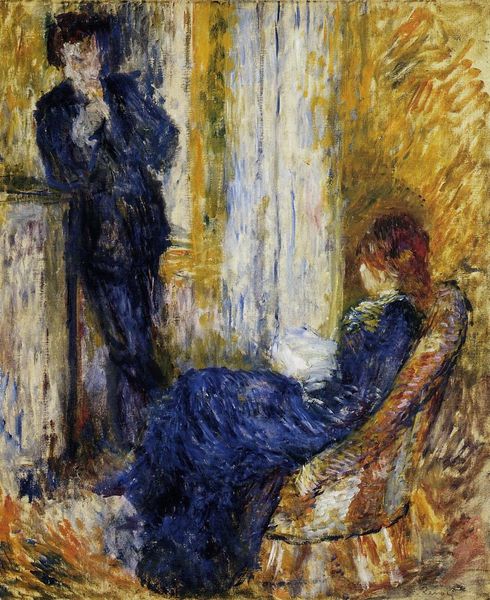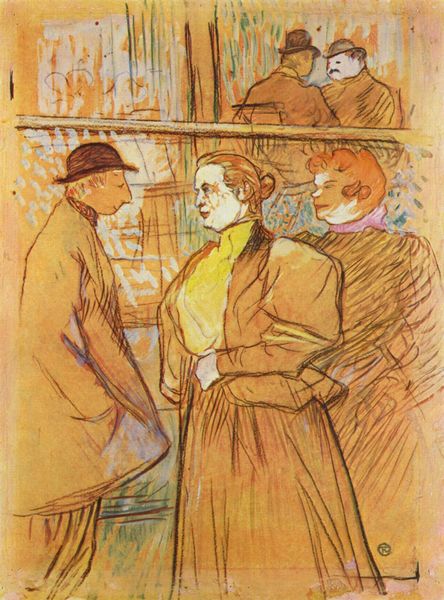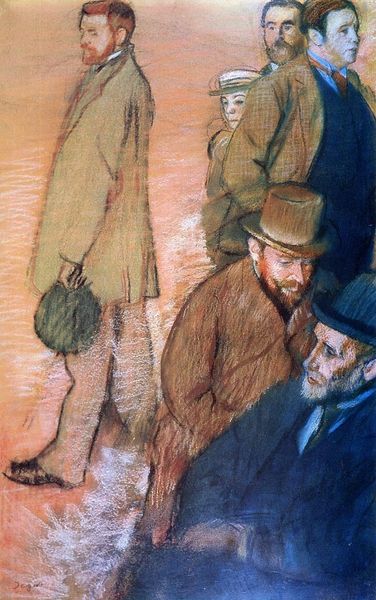
Dimensions: 58 x 46 cm
Copyright: Public domain
Editor: This is Henri de Toulouse-Lautrec's "Le Blanchisseur de la Maison," painted in 1894. It seems so intimate and immediate, almost a snapshot of a mundane moment. I’m really struck by how raw and unpolished the figures seem. What do you see in this piece? Curator: I see Toulouse-Lautrec engaging with the political realities of representation. This isn't a flattering portrait of Parisian life; it's a look at the working class, at figures often overlooked by the dominant narrative. How does the setting—probably a laundry—influence your understanding? Editor: It definitely brings the subjects down to earth. I mean, they are literally dealing with laundry, which isn’t glamorous at all! The woman almost seems resigned. Curator: Exactly. The blanchisseur and his wife were likely his neighbors in Montmartre. He is not only depicting them but also giving the impression that they exist in a wider socio-economic web. We see a genre painting imbued with a psychological depth rarely explored in commercial art of that period. This adds significant dimension. It feels far removed from the idealized portrayals commissioned by the bourgeoisie, don’t you think? Editor: Absolutely! I think seeing the labor, and honestly the almost harsh light, strips away any idealization. Curator: Consider then, how the artist leverages such realism in a market increasingly driven by sensationalized commercial art, or even academic idealism. Toulouse-Lautrec chooses to display laborers with their tools; that statement alone pushes against aesthetic and social norms of his time. Editor: So he's challenging the status quo by simply showing these individuals realistically? That’s really insightful. Curator: Indeed! By embracing scenes from everyday life he forces us to confront the human condition. It’s not about what is beautiful, but about the truth he presents. It really forces me to reconsider the purpose of public art itself, actually. Editor: I agree. Looking at it that way adds so much more context to an otherwise ordinary scene. It also shows me that portraits can be so much more than likenesses of rich patrons.
Comments
No comments
Be the first to comment and join the conversation on the ultimate creative platform.
